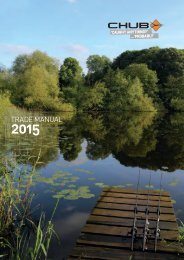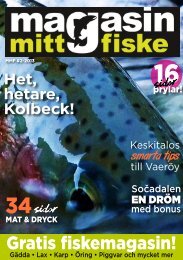CHAMPAGNE
This combination of weather influences makes for constant, moderate precipitation – a near-ideal pattern of rainfall that provides the vines with just enough water to produce quality fruit. Mean annual rainfall for the Champagne region as a whole is close to 700mm, ranging from 600mm to 900mm depending on the area.
This combination of weather influences makes for constant, moderate
precipitation – a near-ideal pattern of rainfall that provides the vines with just
enough water to produce quality fruit. Mean annual rainfall for the Champagne
region as a whole is close to 700mm, ranging from 600mm to 900mm depending
on the area.
Create successful ePaper yourself
Turn your PDF publications into a flip-book with our unique Google optimized e-Paper software.
DOWNY MILDEW: Fungal disease of vines.<br />
ESTERS: Chemical elements obtained when acid reacts<br />
with alcohol. They contribute to develop the aromas in<br />
a wine.<br />
FINING: Process of clarification of a wine by adding a<br />
substance which carries the particles in suspension to the<br />
bottom of the container.<br />
GRAFTING: Implanting of a scion onto another vine cane<br />
(stock) which serves as a root system resistant to phylloxera.<br />
INDIVIDUAL RESERVE: The Champagne profession<br />
has agreed to create a compulsory individual reserve,<br />
controlled by the CIVC. All the producers are committed<br />
to creating this reserve in years described as<br />
vintages of excellent quality. It is limited to 8,000 kg/<br />
ha and enables the Champenois to satisfy growing<br />
demand or to compensate for small vintages.<br />
KIESELGUHR: Mineral made of pulverized silica used for<br />
filtering the wine.<br />
LEES: The lees consist mainly of dead yeasts, which settle<br />
as a sediment at the bottom of the vat and also in the bottle<br />
following secondary fermentation.<br />
LIQUEUR DE TIRAGE: A solution of yeasts, sugar and wine<br />
that is added to the cuvee to trigger the second fermentation<br />
in the bottle.<br />
LIQUEUR D’EXPEDITION: A solution of still wine from<br />
Champagne and cane sugar that is added to Champagne<br />
after disgorgement. The quantity of sugar added is what<br />
determines the type of wine (brut, sec, demi-sec, etc.)<br />
MALOLACTIC FERMENTATION: A biochemical, naturallyoccurring<br />
process that transforms malic acid into lactic acid<br />
through the action of lactic bacteria.<br />
MARC: Two meanings. 1. In Champagne, unit of measure<br />
used for pressing. It corresponds to 4,000 kg of grapes<br />
2. Pressing residues (skins, grape seeds…).<br />
MILLERANDAGE: Formation of stunted, seedless berries.<br />
MINERAL: Characterizes a whole range of aromas reminiscent<br />
of certain minerals (chalk, sandstone…).<br />
MUST: Grape juice.<br />
OÏDIUM – POWDERY MILDEW: Fungal disease of vines.<br />
PHOTOSYNTHESIS: The process by which green plants<br />
synthesise organic matter, using the energy from sunlight.<br />
RETROUSSE: The breaking-up of the press cake between<br />
each pressing.<br />
TAILLE: The 500 litres of must extracted after the cuvée<br />
during the pressing of a marc.<br />
TERTIARY AROMAS: Aromas which develop after the<br />
fermentations, during maturation and ageing.<br />
TIRAGE: Bottling.<br />
Glossary<br />
39

















